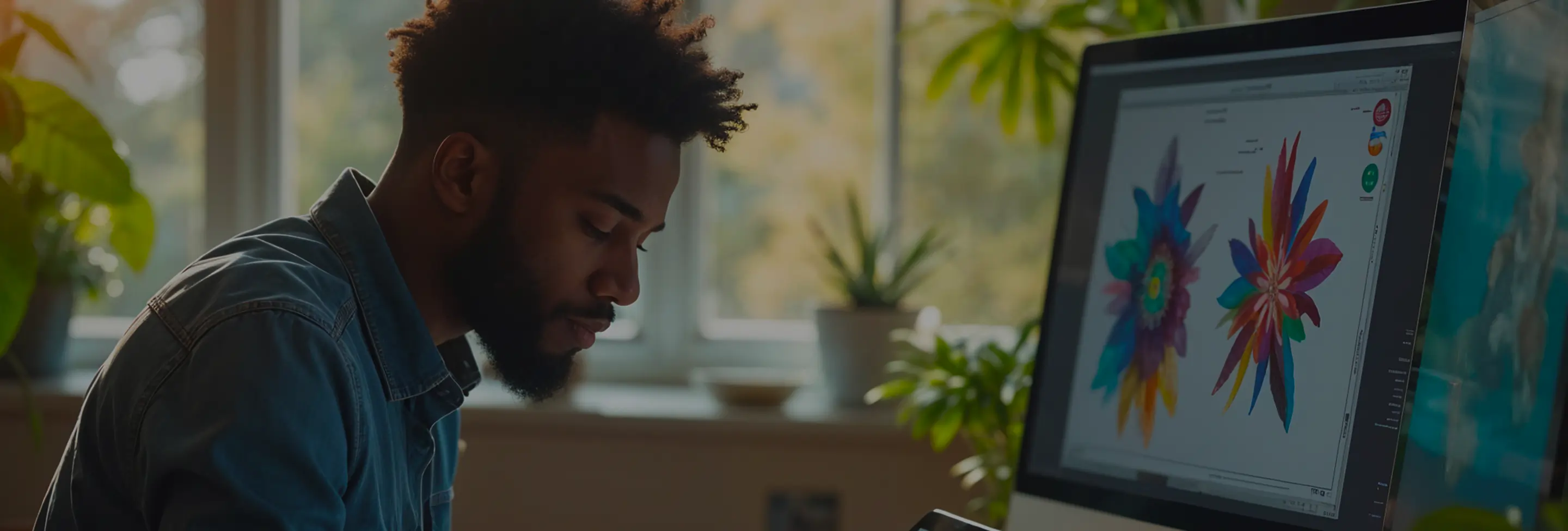
In analyzing over 2,000 branding projects from emerging startups, we've identified the top 20 questions that shape the creation of impactful startup logos. These inquiries address the most frequent challenges entrepreneurs face, offering clarity and actionable strategies to ensure your logo not only stands out but also effectively represents your brand's vision and values.
An effective startup logo is distinctive, memorable, and versatile. It should encapsulate the brand's essence and appeal to its target audience. For example, Airbnb's logo subtly integrates a sense of belonging and community, aligning with its service.
Key Elements:
Common Misconception: A complex logo signifies sophistication. In reality, simplicity often leads to better brand recall.
Color theory plays a crucial role in logo design as colors evoke emotions and convey messages. For instance, blue often represents trust and professionalism, making it popular in tech and finance industries.
Actionable Tips:
Hiring a professional designer brings expertise and a personalized touch, ensuring your logo aligns with your brand strategy. Online tools like Canva or Looka offer cost-effective and quick solutions but may lack uniqueness.
When to Choose Each Option:
Example: Slack's logo evolution involved simplifying the original design to enhance recognition and versatility across platforms.
Conduct a thorough competitor analysis to identify common themes and avoid similar elements. Focus on what sets your brand apart and incorporate unique features that highlight your distinctiveness.
Actionable Solutions:
Typography conveys the brand's personality. Serif fonts often indicate tradition and reliability, while sans-serif fonts suggest modernity and simplicity.
Practical Example: Google uses a sans-serif typeface for its logo, reflecting its innovative and user-friendly approach.
Ensure your logo is available in multiple formats for various uses:
Common Misconception: PNG files are sufficient for all purposes. In reality, vector formats are essential for scalability and versatility.
Create variations of your logo for different screen sizes and resolutions. A simplified version may be necessary for smaller devices to maintain clarity and recognition.
Actionable Tips:
Ensure your logo is accessible by maintaining high contrast and clear shapes. Avoid relying solely on color to convey meaning, accommodating users with color vision deficiencies.
Practical Example: Use both color and distinct shapes to ensure the logo is recognizable in grayscale or monochrome formats.
Maintain consistency in logo usage to build brand recognition. Adapt the logo's size and format based on the platform while preserving its core elements.
Actionable Steps:
Example: Avoid stretching or distorting the logo to fit different spaces, which can compromise its integrity.
Register your logo as a trademark to legally protect it from unauthorized use. Establish brand guidelines outlining proper logo usage to ensure consistency and prevent misuse.
Actionable Tips:
Subtle updates, such as tweaking colors or typography, can modernize your logo while retaining its core identity. Ensure changes align with your evolved brand strategy.
Example: Instagram updated its logo by simplifying the camera icon and adopting a gradient color scheme, maintaining recognizability while enhancing modern appeal.
Current trends include:
Actionable Insights: While trends can inspire, prioritize timeless elements to ensure longevity and prevent frequent redesigns.
Evaluate your logo's effectiveness through brand recognition, customer feedback, and its ability to convey your brand's message. Track metrics such as brand recall and visual association in marketing campaigns.
Practical Methods:
Design a monochrome version that maintains clarity and contrast. Simplify elements to ensure the logo remains recognizable without color.
Actionable Steps:
Revisit the vector design to ensure all elements are scalable. Optimize paths and simplify shapes to maintain quality at various sizes.
Troubleshooting Tips:
Enhance visibility by optimizing color contrast, leveraging appropriate sizing, and ensuring compatibility across different devices and screen resolutions.
Actionable Strategies:
Creating a startup logo involves a blend of creativity, strategic thinking, and technical proficiency. By addressing these expert-identified questions, entrepreneurs can navigate the complexities of logo design, ensuring their brand stands out in a competitive landscape. Remember, a well-crafted logo is not just a visual symbol but a foundational element that communicates your startup's identity and values to the world.
Important Note: Always consider consulting with branding professionals to tailor your logo design to your specific business needs and market dynamics.




Subscribe to our newsletter to receive $100 off your first month of Tapflare's flat rate unlimited design and development service. Your coupon code will be sent to your email.